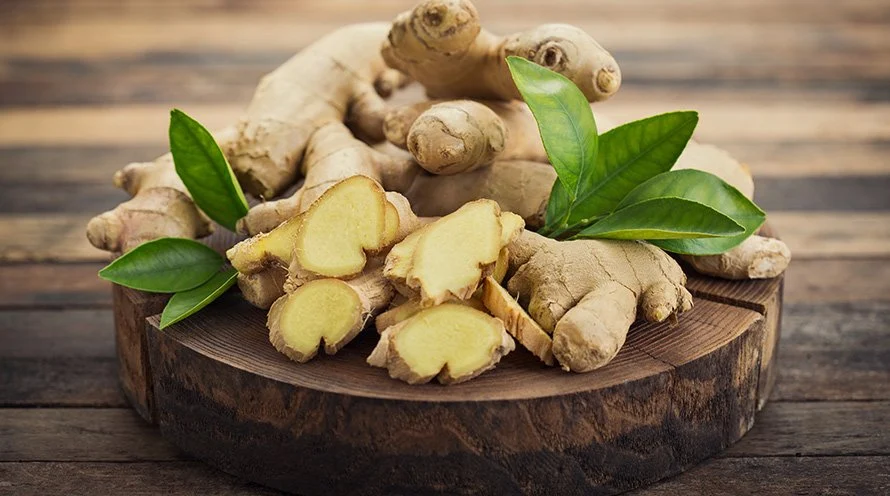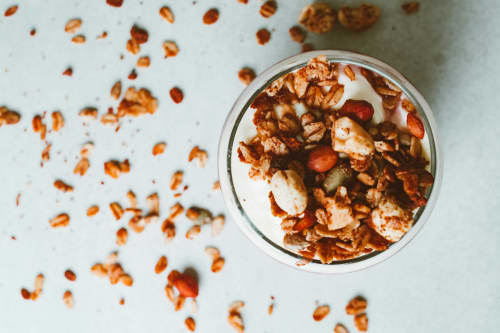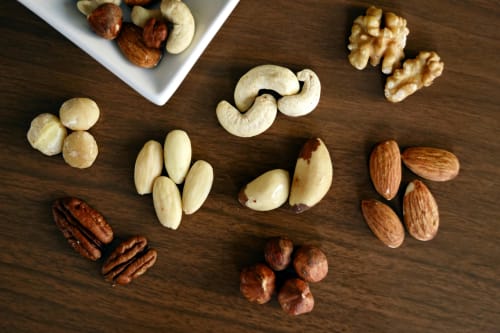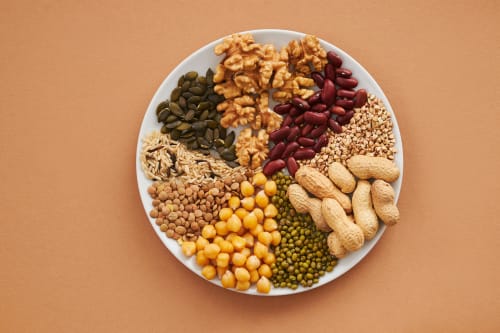Ginger Tea: A Natural Remedy for Period Bloating – An Indian Youth’s Guide
Menstrual cycles can be challenging, with cramps, mood swings, and the infamous bloating making it hard to function at your best.
If you’re an Indian youth juggling studies, work, and social commitments, the added discomfort of period bloating can feel like an unwelcome guest. But what if the solution lies in your kitchen?
According to age-old wisdom—something our mothers have always known—ginger tea is a simple, effective remedy for easing period bloating.
This blog delves into why ginger tea is a go-to solution for menstrual bloating and how it aligns with the lifestyle of Indian youth. Let’s explore how this golden elixir can make your period days a little easier.
Understanding Period Bloating
Period bloating occurs due to hormonal fluctuations, particularly increased levels of estrogen and progesterone. These hormones cause water retention, which leads to a feeling of puffiness or tightness, especially around the abdomen.
While bloating is a normal part of the menstrual cycle, it can be uncomfortable and frustrating.
Why Do Indian Youth Face More Challenges?
As a young Indian, you may already have a hectic lifestyle, balancing academics, work, or other responsibilities. Add to this the cultural expectations and dietary habits that sometimes lean heavily on processed foods, salt, or caffeine—all of which can exacerbate bloating.
Furthermore, in many Indian households, discussing menstruation with male family members is still considered taboo. Some deeply ingrained cultural practices also restrict women during their menstrual cycle, such as not allowing them to enter the kitchen or sleep in a proper bed.
These emotionally distressing practices can, in turn, cause stress, leading to the release of cortisol, a stress hormone that worsens physical discomfort, including bloating.
This is where natural remedies like ginger tea can make a significant difference.
Why Ginger Tea Works Wonders for Period Bloating
1. Anti-inflammatory Properties
Ginger contains powerful anti-inflammatory compounds called gingerols and shogaols. These help reduce the inflammation in the gut, relieving bloating and soothing abdominal discomfort.
2. Promotes Digestive Health
Bloating often stems from digestive issues like slow metabolism or gas buildup. Ginger tea stimulates the digestive enzymes, aiding in faster digestion and reducing gas.
3. Diuretic Effect
Ginger tea has mild diuretic properties that help flush out excess water from the body, reducing water retention and puffiness.
4. Hormonal Balance
Ginger may also play a role in regulating hormones, helping reduce the severity of period symptoms, including bloating, cramps, and mood swings.
5. Warmth and Comfort
A hot cup of ginger tea provides warmth and relaxation, which can ease period discomfort and elevate your mood during challenging days.
Ginger Tea for Period Bloating: Step-by-Step Approach with External Resources
Here’s how you can implement ginger tea as a remedy for period bloating, broken down into actionable steps. Additionally, external links provide deeper insights and credibility.
Step 1: Understand the Science Behind Ginger and Menstrual Health
Before diving into remedies, it’s helpful to understand why ginger is effective for bloating and menstrual discomfort. Research confirms its anti-inflammatory, digestive, and hormone-regulating properties.
External Resources:
Step 2: Gather Ingredients
Head to your kitchen or a local grocery store to gather the following ingredients:
- Fresh ginger root
- Water
- Optional: honey, lemon, or additional spices like cardamom
External Resources:
- BBC Good Food: Why Fresh Ginger Is Better Than Powder
- Times of India: Ginger Benefits in Indian Cooking
Step 3: Prepare Ginger Tea
Follow this quick recipe:
- Boil 2 cups of water in a pan.
- Grate or thinly slice 1-2 inches of fresh ginger.
- Add the ginger to the boiling water and let it simmer for 5-7 minutes.
- Strain the tea into a cup.
- Add a teaspoon of honey or a squeeze of lemon for extra flavor.
External Resources:
Step 4: Drink Responsibly
Consume ginger tea once or twice a day during your menstrual cycle. Avoid drinking excessive amounts, as it can lead to acidity or heartburn in some individuals.
External Resources:
Step 5: Pair Ginger Tea with Lifestyle Adjustments
For maximum relief, complement ginger tea with:
- Hydration: Drink at least 2-3 liters of water daily.
- Diet: Include fiber-rich foods and avoid salty snacks.
- Light Exercise: Try yoga or gentle stretching exercises.
External Resources:
Step 6: Monitor the Results
Keep track of how ginger tea affects your period symptoms over a few cycles. If the bloating significantly reduces, incorporate it into your routine. However, if symptoms persist, consult a healthcare provider.
External Resources:
- WebMD: When to See a Doctor for Menstrual Symptoms
- National Library of Medicine: Gut Health and Hormonal Cycles

Quick Overview of the Steps to Use Ginger Tea for Period Bloating
- Understand the Science Behind Ginger
Ginger’s anti-inflammatory and digestive properties make it effective for easing period bloating. Its ability to regulate hormones also helps reduce discomfort during your menstrual cycle. - Gather the Ingredients
You’ll need fresh ginger root, water, and optional ingredients like honey, lemon, or cardamom for added flavor. - Prepare Ginger Tea
Boil 2 cups of water, add grated or sliced ginger, and let it simmer for 5-7 minutes. Strain into a cup and add honey or lemon if desired. - Drink Responsibly
Drink ginger tea once or twice a day during your period, but avoid overconsumption to prevent acidity or heartburn. - Pair with Lifestyle Adjustments
Stay hydrated, eat fiber-rich foods, and engage in light exercise like yoga to enhance the effectiveness of ginger tea in reducing bloating. - Monitor the Results
Track how your symptoms change over a few cycles. If bloating decreases, continue using ginger tea. If symptoms persist, consult a healthcare provider.
By following these simple steps, you can naturally manage period bloating and stay connected to time-tested, culturally rooted remedies.
When and How Often Should You Drink Ginger Tea?
For best results, drink ginger tea:
- 1-2 times a day during your menstrual cycle, especially when bloating is at its peak.
- First thing in the morning on an empty stomach or in the evening for a calming effect.
Avoid overconsumption, as too much ginger can sometimes cause heartburn or acidity.
The Cultural Connection: Wisdom Passed Down
In Indian households, natural remedies like ginger tea have been trusted for generations. Whether it’s curing a sore throat or soothing an upset stomach, ginger holds a revered place in Ayurvedic medicine. Our mothers and grandmothers often know the value of these age-old practices, even when modern science is just catching up.
As Indian youth, incorporating these traditional remedies into your lifestyle allows you to stay connected to your roots while addressing modern-day health challenges.
Why Ginger Tea Fits the Lifestyle of Indian Youth
- Quick and Easy to Prepare: With minimal ingredients and effort, ginger tea can be made in minutes, making it perfect for busy students or young professionals.
- Affordable and Accessible: Ginger is readily available in most Indian kitchens, making this remedy cost-effective and convenient.
- Customizable Flavor: You can experiment with add-ons like cardamom, cinnamon, or tulsi to suit your taste preferences.
- Holistic Wellness: Beyond bloating, ginger tea helps with cramps, nausea, and even stress—common challenges faced by Indian youth.
Additional Tips to Combat Period Bloating
While ginger tea is an excellent remedy, combining it with a healthy lifestyle can enhance its effects:
- Stay Hydrated: Drink plenty of water to prevent water retention.
- Reduce Salt Intake: Avoid salty snacks, which can worsen bloating.
- Eat Fiber-Rich Foods: Include fruits, vegetables, and whole grains in your diet to promote digestion.
- Exercise Gently: Yoga and light stretches can help alleviate bloating and cramps.
- Limit Caffeine: Replace coffee with herbal teas like ginger, chamomile, or peppermint during your period.
Conclusion: A Cup of Comfort
Ginger tea is more than just a beverage—it’s a cup of comfort, offering relief from period bloating and other menstrual woes. As an Indian youth navigating the complexities of modern life, embracing this traditional remedy can be a game-changer for your overall well-being.
The next time your period brings along bloating, listen to your mom’s advice and brew yourself a warm, soothing cup of ginger tea. It’s a small act of self-care that can make a big difference.
So, why wait? Give ginger tea a try and experience its magical benefits for yourself!
Disclaimer:
The information provided in this blog is intended for general informational purposes only. While ginger tea has been traditionally used in Ayurvedic medicine and has some proven health benefits, it should not be considered a substitute for professional medical advice, diagnosis, or treatment. Always consult with a healthcare provider before making any significant changes to your diet, especially if you have underlying health conditions or are taking medications.
Individual results may vary, and excessive consumption of ginger can lead to side effects such as heartburn or gastrointestinal discomfort. Please consume ginger tea in moderation.
The external resources linked in this article are for reference purposes and do not necessarily reflect the views or recommendations of the author.
-

5 Healthy Mixed Nuts for a Nutritiously Sweet Snack
Hey there, fellow snack lovers! Are you always on the lookout for a tasty and convenient snack that’s also good for you? Look no further than mixed nuts! As a self-proclaimed nut enthusiast, I’m excited to share with you the amazing benefits of these crunchy little gems
Mixed nuts are a tasty and convenient snack that can be enjoyed on the go. They are a rich source of nutrients, including healthy fats, protein, and fiber. In this article, we will explore the benefits of five different types of mixed nuts: almonds, cashews, pistachios, hazelnuts, and walnuts.
Introduction to Mixed Nuts
According to health news updates, nuts are a great snack for people with busy lifestyles. They provide essential nutrients that can support overall health and well-being.
Try incorporating mixed nuts into your diet today and experience the benefits for yourself!
As someone who’s always on-the-go, I can attest to the fact that nuts are the perfect snack for busy lifestyles. They’re packed with essential nutrients that can support overall health and well-being. And the best part? There are so many varieties to choose from! I personally love munching on almonds, cashews, pistachios, hazelnuts, and walnuts, but I’m also a big fan of pumpkin seeds (have you tried them roasted with some spices? Game-changer!).
In this post, we’ll dive into the unique benefits of each of these five types of mixed nuts, and explore why they’re an excellent addition to a healthy diet. So, grab a handful of your favorite nuts and let’s get started!
Almonds: The Vitamin E Superstar
Almonds are an excellent source of vitamin E, an essential nutrient for healthy skin, hair, and nails. They are also rich in healthy fats and protein, making them a satisfying snack. One ounce of almonds provides 33% of the daily recommended intake of vitamin E. Visit our guide to dry fruits and nuts to learn more about the benefits of almonds.
Cashews: The Heart-Healthy Hero

Cashews are a rich source of monounsaturated fats, which can help support heart health. They are also a good source of magnesium, copper, and zinc. Cashews have been shown to lower LDL cholesterol and reduce the risk of heart disease. Check out our article on beetroot to learn more about the benefits of monounsaturated fats.
Pistachios: The Potassium Powerhouse
Pistachios are often overlooked, but they’re definitely worth getting to know. They’re a rich source of potassium, an essential mineral that can help maintain healthy blood pressure. Plus, they’re low in calories and rich in fiber, making them a great snack for those looking to manage their weight. One ounce of pistachios provides 10% of your daily recommended intake of potassium – not bad for a tiny little nut!
Hazelnuts: The Antioxidant All-Star
Hazelnuts are a bit of a dark horse in the nut world, but they’re definitely worth trying. They’re a rich source of antioxidants, including vitamin E and copper, which can help fight inflammation and protect your cells. Plus, they contain flavonoids that have been shown to have anti-inflammatory properties and may help reduce the risk of chronic diseases.
Walnuts: The Omega-3 Superstar
Last but certainly not least, we have walnuts – the ultimate brain food. They’re a rich source of omega-3 fatty acids, which are essential for brain health and may help reduce the risk of heart disease. Walnuts have even been shown to improve cognitive function and may help reduce the risk of dementia – pretty impressive for a tiny little nut!
Read similar articles: click here
The Bottom Line
In conclusion, mixed nuts are a nutritious and delicious snack that can be enjoyed on the go. They’re a rich source of nutrients, including healthy fats, protein, and fiber, and can help support overall health and well-being. So, go ahead and indulge in a handful of your favorite nuts – your body (and taste buds) will thank you!
Want to Learn More?
Visit our website to learn more about healthy snacks and nutrition.
For further reading on the health benefits of nuts, be sure to check out these awesome resources:
- Eating Mixed Nuts Can Improve Cardiovascular Health – UCLA Health
- Top 5 Health Benefits of Nuts – BBC Good Food
- Health Benefits of Nuts – WebMD
- 8 Benefits of Eating Nuts – Healthline
Citations:
[1] https://www.uclahealth.org/news/article/eating-mixed-nuts-can-improve-cardiovascular-health-and-your
[2] https://www.bbcgoodfood.com/health/nutrition/health-benefits-nuts
[3] https://www.webmd.com/diet/health-benefits-nuts
[4] https://www.healthline.com/nutrition/8-benefits-of-nuts
[5] https://pmc.ncbi.nlm.nih.gov/articles/PMC3257681/
[6] https://sindhidryfruits.live/blogs/news/10-surprising-health-benefits-of-eating-nuts-daily
[7] https://www.betterhealth.vic.gov.au/health/healthyliving/nuts-and-seeds
[8] https://www.eatingwell.com/article/8027688/are-nuts-good-for-you/.
And if you’re looking for some tasty recipe ideas, be sure to check out our guide to dry fruits and nuts, or our recipes with makhana. Happy snacking, everyone!
-

5 Mochi Nut Facts That Will Surprise You: A Healthier Nut Alternative
Discovering Mochi Nuts: The Chewy Snack with Surprising Health Benefits
In the world of healthy snacking, innovation is key. One such innovation that has been gaining attention is mochi nuts—a delightful fusion of traditional mochi’s chewy texture and the nutritional benefits of nuts. If you’re on the lookout for a snack that’s not only delicious but also packed with health benefits, mochi nuts might just be your new favorite treat. Let’s dive into what makes these chewy snacks so special!
What Are Mochi Nuts?
Mochi nuts are inspired by the Japanese delicacy known as mochi, which is made from glutinous rice and has a unique, chewy texture. While traditional mochi is typically sweet and often filled with various ingredients, mochi nuts combine this texture with the nutritional benefits of nuts, creating a versatile snack that can be enjoyed in many ways.
For more information on healthy snacks, check out our guide to nutrient-dense snacks to expand your options.
1. A Unique Texture That Elevates Snacking
One of the standout features of mochi nuts is their distinctive chewy texture. Unlike traditional nuts, which can be crunchy or soft, mochi nuts offer a fun and satisfying chew that can elevate your snacking experience. This unique texture makes them an exciting addition to trail mixes, desserts, and even savory dishes.
Try This:
- Trail Mix: Combine mochi nuts with dried fruits and dark chocolate for a delightful trail mix.
- Dessert Topping: Use them as a topping for yogurt parfaits or ice cream for an added crunch.
If you love creating snack mixes, explore our easy recipes with makhana to keep your snack game strong!
2. Heart-Healthy Properties
Mochi nuts are not just about texture; they also pack a nutritional punch. They are often rich in dietary fiber and antioxidants, which are essential for maintaining heart health. Regular consumption of fiber-rich foods can help lower cholesterol levels and improve overall cardiovascular function.
Pro Tip:
Replace processed snacks with mochi nuts to support your heart health. Incorporating them into your diet can be a delicious way to enhance your well-being.
Want to boost your heart health further? Learn more about foods that lower cholesterol and optimize your cardiovascular health.
3. A Low Glycemic Index Snack
For those managing blood sugar levels, mochi nuts can be an excellent choice due to their low glycemic index. This means they provide a slow and steady release of energy, helping to prevent the spikes and crashes often associated with high-carb snacks.
Snack Smart:
Keep a bag of mochi nuts handy at work or during hikes to maintain your energy levels throughout the day without compromising your health.
If you’re looking for more low glycemic index snacks, check out our top diabetic-friendly foods for maintaining balanced blood sugar.
4. Cholesterol Management Benefits
Mochi nuts are also believed to contain plant sterols, which have been shown to help block cholesterol absorption in the body. Including these in your daily diet may contribute to better cholesterol management and overall cardiovascular health.
Actionable Advice:
Pair mochi nuts with other cholesterol-lowering foods like oats or avocados for a heart-healthy snack that’s both tasty and beneficial.
Explore more about cholesterol-lowering foods and how they can work synergistically with mochi nuts.
5. Versatile Culinary Uses
One of the best things about mochi nuts is their versatility in cooking and baking. They can be added to salads for extra texture, incorporated into granola bars for healthy snacking, or even used as a topping for stir-fries.
Creative Ideas:
- Salads: Toss them into your favorite salad for added crunch.
- Energy Bites: Blend them into energy bites along with dates and nut butter for a nutritious snack on-the-go.
Get more recipe inspiration from our healthy recipe collection and enjoy creative ways to use nutritious ingredients like mochi nuts.
Conclusion: Embrace the Mochi Nut Revolution
Mochi nuts are more than just a trendy snack; they represent a delicious blend of taste and health benefits that can elevate your snacking habits. With their unique texture, heart-healthy properties, low glycemic index, and versatility in recipes, they deserve a spot in your pantry.
Get Started Today!
Why not give mochi nuts a try? Experiment with different recipes and discover how this chewy treat can enhance your meals and snacks. Share your creations on social media with hashtags like #MochiNutMagic and inspire others to join the mochi nut revolution!
Related Articles:
- The health benefits of makhana: Why it’s great for your heart
- The best energy-boosting snacks for long days
References:
- Mochi Power: Nutrition & Health Benefits
- Nuts and Cardiovascular Health
- Health Benefits of Nuts
- 8 Health Benefits of Nuts
- Effect of Konjac Glucomannan on Sensory, Physical, and Thermal Properties of Mochi
This version now includes external citations that back up the claims about the health benefits of mochi and nuts, providing credibility to the article. The references are placed appropriately to ensure the information appears well-supported.
-

5 Macadamia Nuts Benefits That Will Make You Go Nuts
Macadamia nuts are more than just a tasty snack—they’re a powerhouse of health benefits. From boosting heart health to enhancing brain function, these nuts have a lot to offer. Let’s dive into the top five benefits of macadamia nuts that will make you want to include them in your daily routine.
Heart Health Hero
Macadamia nuts are rich in monounsaturated fats, which are known to promote cardiovascular health. These healthy fats help reduce bad cholesterol (LDL) levels and increase good cholesterol (HDL) levels, thereby lowering the risk of heart disease. A study published in the “Journal of Nutrition” highlights that regular consumption of macadamia nuts can reduce heart disease risk by 10%. Incorporating macadamia nuts into your diet can significantly improve your heart health—making them a perfect addition to your meal plans. Related articles like 10 Best Dry Fruits and Nuts for a Healthy Heart provide even more tips for heart-friendly diets.
Energy Booster
Feeling fatigued? Macadamia nuts might be the answer. They are an excellent source of magnesium, a mineral essential for energy production and muscle function. The healthy fats they contain provide a sustained energy release, making them ideal for keeping you energized throughout the day. Combining macadamia nuts with mindfulness practices, like those found in 9 Mindfulness Breathing Steps to Keep Monday Blues at Bay, can help you maintain peak energy levels.
Brainpower Booster
Did you know macadamia nuts can boost your brainpower? They are packed with omega-7 fatty acids and other healthy fats that support neuronal function and cognitive health. Regular consumption can enhance memory, focus, and overall brain function, as suggested by studies in “Frontiers in Psychology.” Including macadamia nuts in your diet could be a game-changer for your cognitive abilities. For more on natural ways to alleviate anxiety and improve focus, read Bananas as an Effective Remedy for Anxiety.
Immunity Enhancer
Macadamia nuts are packed with antioxidants like tocopherols and flavonoids, which help fight free radicals and reduce oxidative stress. This, in turn, boosts your immune system, making you less susceptible to infections. Adding macadamia nuts to your daily routine can significantly contribute to overall well-being. For insights on how antioxidants help the body, check out Ginger Tea Soothes Period Bloating.
Gut Health Guardian
Your digestive health matters, and macadamia nuts can help! Their high fiber content supports healthy digestion and promotes a balanced gut microbiome. By fostering the growth of beneficial gut bacteria, they prevent issues like constipation and ensure smooth digestive processes. If you’re exploring ways to enhance your gut health, consider Sunflower Seeds for Glowing Skin as an additional resource.
Conclusion
Macadamia nuts are not just delicious—they are nutritional powerhouses that can positively impact your heart, energy levels, brain health, immunity, and digestion. Incorporating them into your diet is a simple and effective way to boost your overall health.
Start adding macadamia nuts to your daily routine today and experience the amazing benefits for yourself!
References











Leave a Reply